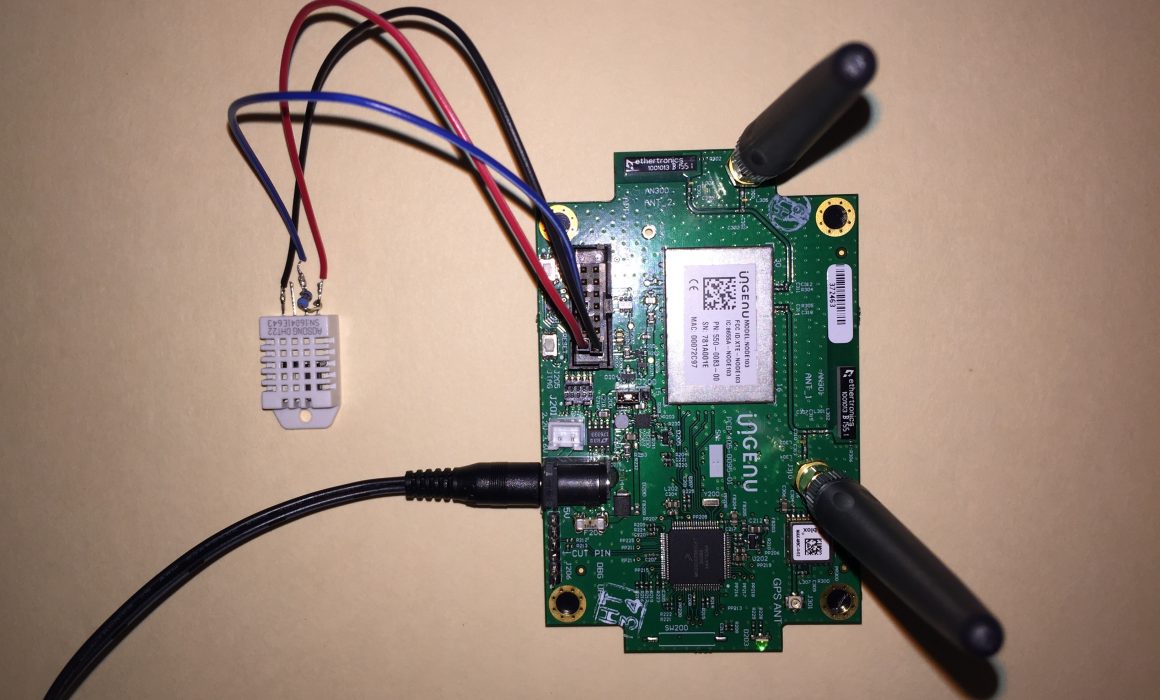RPMA Hackathon – Q&A with Team AC Power Monitor
Ingenu’s first company-sponsored hackathon, “The RPMA Omegathon and Wizard Battle”, has come to an end but we are still very excited about all of the different applications that our employees have created. One team, Team AC Power Monitor, won two prizes for ‘Best Software Integration’ and ‘Most Elegant & Efficient Use of the rACM’.
This is what Pratik Yadav, member of Team AC Power Monitor, said about his team’s efforts:
What did you make? We developed an Air Conditioner (AC) Power Monitor System using the rACM (Reference Application Communication Module) board powered by RPMA. The Monitor System takes four inputs from the user defined as: AC tonnage, desired temperature, and AC star rating. It then accesses the current temperature from Intellect and uses that to calculate various parameters – such as power consumed, CO2 emissions of AC in kgs, cost required to reach the desired temperature, time required that the AC will run to reach the desired temperature, cost of running the AC for 2400 hours/year, and average temperature of the room.

How did you make it? We decided to choose a DHT22 temperature/humidity sensor. DHT22 is a one-wire data line sensor and requires a unique set of protocols to communicate with the rACM board. Thus, we wrote drivers for DHT22 in embedded-C. We used uplink interval (UI) of five minutes and a read block interval of one minute. Therefore, for every UI we got five temperature readings. We then accessed the REST API for the Intellect and parsed the temperature data into a text file. We averaged the temperature data to get the current temperature for performing further calculations. A python script was written to access the text file and then calculate the various results as mentioned above. A GUI was created using wxpython, which lets the user give the four inputs as discussed above.
What made you decide on creating this application? The total AC costs in the US amount to 29 billion dollars per year. We need a system to monitor the AC costs and the corresponding environmental effect. Thus, we decided to develop an application which would make people aware of their AC usage and its corresponding effect on the environment using the RPMA technology.
Have you participated in a hackathon before or have any experience building applications? No, I have not.
After creating your own application, what advice would you give to first-time app developers? Equal importance should be given to the hardware development and the software integration of the application. The application developed should be user-friendly and easy to use.
What was your favorite part of participating in this hackathon? The spirit of transforming ideas into experiences.
Congratulations to Pratik and the rest of Team AC Power Monitor (Avinash Pawar and Reena Patil) for doing a great job in this year’s hackathon and making a very impressive application!








 Fierce Wireless – February 1, 2017 – If you’re a relatively new kid on the block, it’s always nice to be able to offer your technology in your hometown, and it’s even better if that town agrees to work with you, which is what Ingenu is doing in San Diego.
Fierce Wireless – February 1, 2017 – If you’re a relatively new kid on the block, it’s always nice to be able to offer your technology in your hometown, and it’s even better if that town agrees to work with you, which is what Ingenu is doing in San Diego.


